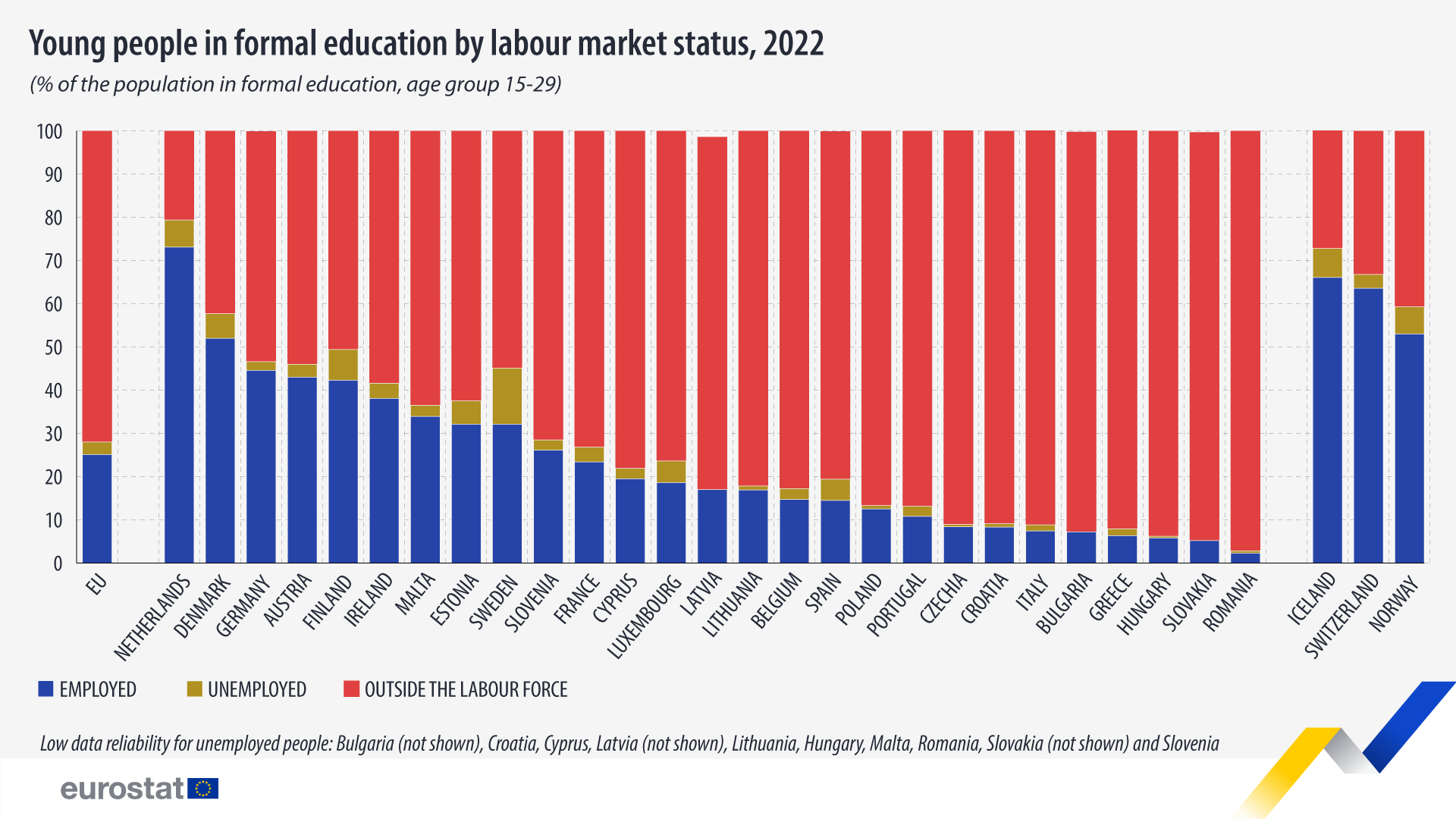EU youth: 25% employed while in education

In 2022, 72% of young Europeans (aged 15-29) remained outside the labour force during formal education. An additional 25% were employed, while 3% were available for employment and actively seeking employment (unemployed) while in formal education.
The dynamics of young people's transition from formal education to the labour market varies significantly among EU countries. These disparities can be influenced by national education systems, availability of training, labour market characteristics, and cultural factors.
Despite a quarter of young Europeans being employed while studying, this statistic conceals substantial national differences. At the national level, the highest shares of young people employed during formal education were observed in the Netherlands (73%), Denmark (52%), and Germany (45%). In contrast, Romania (2%), Slovakia (5%), and Hungary (6%) reported the lowest shares.
Source dataset: Eurostat extraction
The highest shares of young people in formal education who are available for employment and actively seeking employment were recorded in Sweden (13%), Finland (7%), and the Netherlands (6%). Conversely, Hungary, Czechia, Romania, Croatia, Poland, and Lithuania had less than 1% of young people (aged 15-29) seeking employment while at the same time having among highest shares of students outside labour force.
Gender Differences
In 2022, the participation rates of women in formal education continued to surpass those of men across all age groups, with the most significant discrepancy occurring in the 20-24 age group (54% women compared with 45% men).

Source dataset: Eurostat extraction
Women also exhibited a higher likelihood of remaining outside both education and the labour force. These gender disparities persisted across all age groups, with the most pronounced differences recorded among young people aged 25-29. In this group, 15% of women and 7% of men were outside both education and the labour force.
For more information
- Statistics Explained article on the participation of young people in education and the labour market
- Thematic section on labour force statistics
- Database on labour force statistics
Methodological notes
- Low data reliability for unemployed people in education 15-29: Bulgaria (not shown), Croatia, Cyprus, Latvia (not shown), Lithuania, Hungary, Malta, Romania, Slovakia (not shown) and Slovenia.
If you have any queries, please visit our contact us page.

